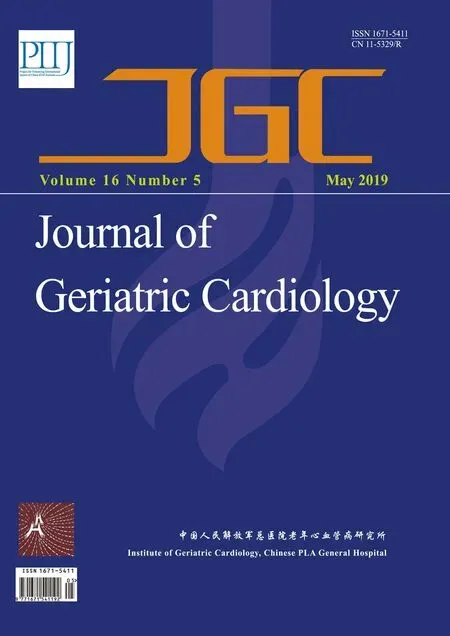The Harvard method of Tau calculation is incorrect
Andrew Horning, Xufang Bai
?
The Harvard method of Tau calculation is incorrect
Andrew Horning1, Xufang Bai2,*
1Konica Minolta Healthcare Americas, Freedom, IN 47431, USA2University of Ottawa Heart Institute, 40 Ruskin St, Ottawa, ON K1Y 4W7, Canada
2019; 16: 429?430. doi:10.11909/j.issn.1671-5411.2019.05.007
Distolic function; Doppler echocardiography; Noninvasive; Tau
Tau, left ventricular diastolic time constant, is the most established index to describe left ventricular diastolic function. Tau has been commonly derived only as an invasive measurement in the catheter lab, where it is inconvenient, expensive and time consuming.
In 1992, a non-invasive formula was proposed in Harvard to calculate Tau in an Echo lab.[1]Five years later, it was clinically corroborated by Scalia,.[2]Unfortunately, we think this method is incorrect. On top of the bold assumptions used in the mathematical deduction process,[3]there are logical flaws in the Harvard formula:
Tau occurs within the isovolumic diastolic time period when both the mitral and aortic valves are closed. So, there are only three ways to investigate what happens within the left ventricle in that time. The first is to insert a catheter into the left ventricle; the second requires measurement of mitral regurgitation; the third requires measurement of aortic regurgitation. The Harvard formula employs none of these three ways, meaning it is theoretically groundless. Another logic flaw is seen by the nature of Tau. Tau is treasured by researchers because it is less affected by preload and afterload. But consider the Harvard formula:[1]
Tau = IVRT/(lnSBP–lnLAP)
IVRT (isovolumic relaxation time) is heavily affected by preload, and SBP (systolic blood pressure) is a typical af-ter- load, making this formula to derive Tau self-con-tradic-tory. For any scientific method, the tolerance for logic flaws is zero. So, the Harvard method is incorrect. There are seven authors in the Harvard paper.[1]Except the first author, none of the others has used this formula during their own scientific research (source: PubMed).
The citation analysis of Scalia’s paper (Figure 1):[2]
Through all these years, diastolic function has been a hot topic. If the Harvard formula were clinically helpful, the citation volume should be much larger, and the trend should be escalating.
If we don’t formally address the Harvard method, it will have negative effects on the study of Tau, and also upon other research still based upon this method.

Figure 1. Citation analysis of Scalia's paper.
We propose that the Harvard method be critically re-evaluated so that other Tau calculation methods can be considered as new tools in patient care.
1 Thomas JD, Flachskampf FA, Chen C,. Isovolumic re-laxation time varies predictably with its time constant and aortic and left atrial pressure: implications for the noninva-sive of ventricular relaxation.1992;124:1305–1313.
2 Scalia GM, Greenberg NL, McCarthy PM,. Noninvasive assessment of the ventricular relaxation time constant in humans by Doppler echocardiography.1997; 95: 151–155.
3 Bai X. Are we on the right way to calculate Tau?2009;22:859.
Correspondence to: xufangbai@yahoo.com
 Journal of Geriatric Cardiology2019年5期
Journal of Geriatric Cardiology2019年5期
- Journal of Geriatric Cardiology的其它文章
- Cardiovascular risk prediction in the elderly
- The association between orthostatic blood pressure changes and subclinical target organ damage in subjects over 60 years old
- Spinal cord hemorrhage: a rare complication of dual antiplatelet therapy for non-ST elevation myocardial infarction
- Cryoballoon ablation on an elder paroxysmal atrial fibrillation patient implanted with double chamber pacemaker: a case report
- Conduction disorder and primary cardiac tumor: a fatal case of multiple lipomas of the right atrium
- Heart failure with preserved ejection fraction in the elderly: pathophysiology, diagnostic and therapeutic approach
